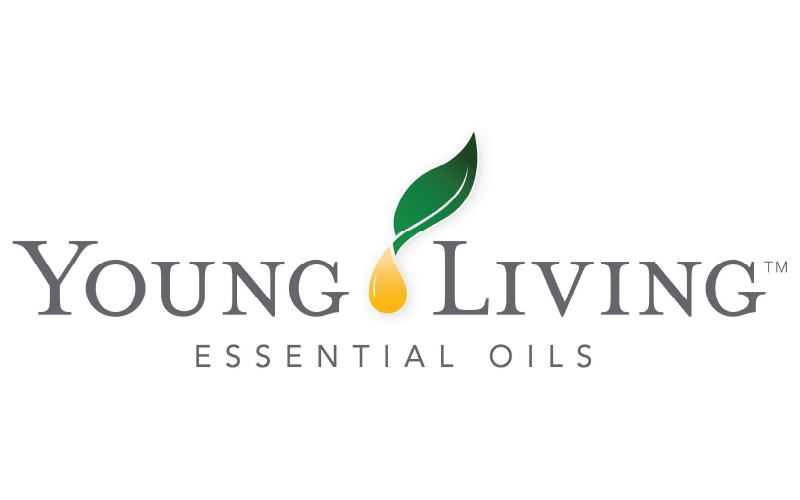You should be. The realm of marketing presents numerous possibilities for individuals with extensive networks looking to capitalize on their connections. Currently, two prominent opportunities in focus are multi-level marketing (MLM) and affiliate marketing. In this discussion, we’ll delve into the essence of both, outlining their advantages and distinctions. By exploring what each entails, you can gain insights into which approach aligns better with your goals and preferences.
What is Multi-Level Marketing (MLM)?

Multi-level marketing (MLM) is a unique marketing strategy that leverages a network of independent distributors to sell products or services directly to consumers. In this business model, distributors not only earn commissions from their direct sales but also from the sales generated by the distributors they recruit into the network. This creates a multi-level structure, hence the name MLM.
One key characteristic of MLM is the emphasis on building a downline organization, where distributors are encouraged to recruit and mentor others. Success in MLM is often associated with the ability to create a robust network and motivate team members to duplicate the selling and recruiting efforts.
Critics argue that some MLMs may resemble pyramid schemes, as the compensation structure heavily relies on recruitment. However, proponents assert that MLM provides individuals with entrepreneurial opportunities and the potential for financial success through teamwork and persistence. Despite varying opinions, MLM remains a prominent and controversial aspect of the direct selling industry.
The Key Participants of the Network Marketing Game
In the network marketing game, various players contribute to the overall dynamics of the industry. Here are the key participants:
Network Marketers/Distributors: These are individuals actively involved in selling products or services and building their network by recruiting others. They earn commissions not only from their sales but also from the sales generated by their downline.
Sponsoring/Enrolling Upline: Refers to the individual who sponsors or enrols a new distributor into the network. The upline often provides guidance, support, and training to help the recruit succeed.
Company/Manufacturer: The entity producing or providing the products or services being marketed. Network marketing companies design compensation plans, provide marketing materials, and oversee the overall operation.
Downline: This term collectively refers to the distributors recruited by an individual distributor. Success in network marketing often involves building a strong and productive downline organization.
Customers: Individuals who purchase products or services directly from the network marketers. They may or may not be part of the network marketing business structure.
Regulatory Bodies: Government agencies or industry associations that regulate and oversee network marketing activities to ensure legal and ethical practices.
Understanding the roles of these players is essential for anyone navigating the network marketing landscape.
How does it Work?
Individual Distributors (Level 1):
- These are the independent distributors at the bottom level who join the MLM company.
- They earn commissions from their direct sales of products or services.
Recruitment and Downline (Levels 2, 3, and so on):
- Distributors on Level 1 can recruit new distributors (Level 2).
- Level 2 distributors, in turn, can recruit new distributors (Level 3), and the process continues.
- Distributors earn commissions not only from their sales but also from the sales of their downline.
Compensation Structure:
- Commissions are typically earned through a structured compensation plan set by the MLM company.
- The compensation plan may include bonuses, overrides, and other incentives based on sales volumes and recruitment levels.
Building a Network:
- Success in MLM is often associated with the ability to build a wide and productive network of distributors.
- Distributors are encouraged to recruit and mentor others, creating a downline organization.
It’s important to note that while MLM is a legitimate business model, critics argue that some MLMs resemble pyramid schemes. Pyramid schemes focus primarily on recruitment, with little emphasis on actual product sales. Legitimate MLMs, on the other hand, should have a significant portion of revenue derived from product sales to end consumers.
MLM vs pyramid schemes
Multi-level marketing (MLM) and pyramid schemes share similarities but have crucial differences that distinguish one from the other.
Multi-Level Marketing (MLM):
Focus on Products/Services: Legitimate MLMs emphasize the sale of actual products or services. Distributors earn commissions not only from their sales but also from the sales of their downline.
Structured Compensation: MLMs have a structured compensation plan that includes various bonuses, overrides, and incentives based on both product sales and the recruitment efforts of the distributor’s downline.
Legitimate Business Model: MLMs operate as legal and viable business models, and many reputable companies use this strategy for distribution.
Pyramid Schemes
Focus on Recruitment: Pyramid schemes primarily revolve around recruitment, with little or no emphasis on selling actual products or services. The main goal is to bring in new participants who invest money, with the promise of earning from the recruitment of others.
No Tangible Products: In pyramid schemes, the products or services are often just a guise, and the real focus is on continuously recruiting new members to sustain the structure.
Unsustainable Structure: Pyramid schemes are inherently unstable and unsustainable. They collapse when recruitment slows down, leaving those at the bottom with financial losses.
Key Differences
Product Emphasis: The primary distinction lies in whether the emphasis is on selling products or recruiting participants.
Legitimacy: MLMs, when operated ethically, are legal and recognized business models. Pyramid schemes, however, are illegal in many jurisdictions.
Longevity: MLMs can endure over the long term if they have viable products and a sustainable business model. Pyramid schemes are designed to collapse eventually.
It’s crucial for individuals to thoroughly research and understand the business model before getting involved, as not all MLMs operate ethically, and pyramid schemes are outright illegal and fraudulent.
Examples to make you understand better, just with 2 products.
These examples illustrate that MLMs, when legitimate, can involve a diverse range of products, and distributors earn commissions through both their personal sales efforts and the sales generated by their recruited downline.
However, it’s essential for individuals to carefully evaluate any MLM opportunity to ensure it aligns with their values and expectations.
Young Living

Products: Young Living is a prominent MLM company that specializes in essential oils and related wellness products. They offer a wide range of essential oils derived from plants, as well as blends, nutritional supplements, personal care items, and household products.
Business Model: Young Living distributors, known as Independent Distributors, earn commissions through the sale of Young Living products. The company places a strong emphasis on the therapeutic benefits of essential oils and promotes a holistic approach to wellness.
Compensation Plan: Distributors can earn commissions not only from their direct sales but also through a multi-level compensation plan that rewards them for building a team and mentoring others.
Avon:

Products: Avon, a well-established MLM company, focuses on beauty, skincare, and personal care products. Their product line includes cosmetics, fragrances, skincare items, and fashion accessories.
Business Model: Avon Representatives, the company’s distributors, earn commissions from the sale of Avon products. The emphasis is on direct selling, and representatives often distribute catalogues or promote products through social networks.
Compensation Plan: In addition to personal sales commissions, Avon representatives can earn bonuses and incentives based on their sales volume and recruitment efforts. Avon has been a pioneer in the direct-selling industry for decades.
These examples illustrate how MLMs operate in the context of specific product categories. Distributors in these companies have the opportunity to earn income through selling tangible products, building a customer base, and, in some cases, recruiting and mentoring others. It’s important for individuals considering involvement in MLMs to thoroughly understand the compensation structure, product line, and company reputation before getting started.
What Are the Main Benefits of MLM?
Benefits are many when you consider MLM business. Trying it for yourself is based on you and your decision. Telling, 6.2 million Americans are into it by making smart choices.
Benefits related to Money are listed below.
Unlimited Earning Potential: Success in MLM is often tied to the ability to build a strong network. As the network grows, so does the potential for higher earnings through increased sales volumes and recruitment.
Residual Income: MLM can provide a form of residual income, where distributors continue to earn commissions from past sales and the ongoing efforts of their downline, even if they are not actively selling.
Incentives and Bonuses: Reputable MLM companies often provide incentives and bonuses for achieving specific sales or recruitment milestones. These can contribute significantly to a distributor’s overall income.
Low Initial Investment: Compared to starting traditional businesses, the initial investment in an MLM venture is typically lower. This allows individuals to enter the entrepreneurial space with less financial risk.
Flexible Income: The flexibility in work hours and the ability to build a network allows distributors to scale their efforts and, consequently, their income based on their dedication and business acumen.
Financial Independence: For those who achieve success in MLM, there is the potential for financial independence. This includes the ability to generate a substantial income and, in some cases, retire early.
Tax Benefits: MLM distributors may enjoy certain tax benefits, such as deductions for business-related expenses. It’s important to consult with a tax professional to maximize these benefits.
Now, I will list down the other benefits of MLM
Exclusive Access to Premium Products: Distributors in MLMs may have access to high-quality and exclusive products that are not readily available in traditional retail outlets. This exclusivity can be an attractive selling point for customers.
Personal Use Discounts: Many MLMs allow distributors to purchase products at a discounted rate for personal use. This not only allows distributors to experience the benefits of the products themselves but also provides an opportunity for cost savings.
Health and Wellness Emphasis: Some MLMs focus on health and wellness products, promoting a holistic approach to well-being. Distributors have the chance to align their businesses with products that cater to growing consumer interest in a healthy lifestyle.
Repeat Business and Customer Loyalty: Consumable products, such as nutritional supplements or skincare items, can lead to repeat business and customer loyalty. Distributors may build a customer base that consistently purchases these products, contributing to ongoing commissions.
Brand Loyalty and Recognition: Successful MLMs often build strong brand loyalty, and distributors benefit from representing recognized brands. The established reputation of the products can make selling easier for distributors.
Innovative Offerings: MLMs may introduce innovative or unique products to the market. Distributors have the opportunity to be early adopters and promote products that stand out in the marketplace.
Positive Testimonials and Reviews: Distributors can leverage positive testimonials and reviews from satisfied customers to build credibility and trust. This social proof can be a powerful tool in marketing products.
It’s important for individuals considering MLM opportunities to align themselves with products they believe in and are passionate about, as genuine enthusiasm can enhance the sales and recruitment process. Additionally, ethical and transparent practices in product representation are crucial for long-term success in MLM.
What is Affiliate Marketing?

Affiliate marketing is a performance-based marketing strategy where businesses reward affiliates (partners or individuals) for driving traffic to the company’s website or generating sales or leads. In this model, affiliates earn a commission or a predetermined flat fee for each customer brought in through their marketing efforts.
Key elements of affiliate marketing include:
Affiliate: The individual or entity promoting the products or services of a company in exchange for a commission.
Merchant (or Advertiser): The business that owns the product or service and sets up an affiliate program to increase sales or leads through the efforts of affiliates.
Affiliate Link: A unique URL assigned to each affiliate, allowing the merchant to track traffic and sales generated by that affiliate.
Commission Structure: The agreed-upon payment model, which could involve a percentage of sales, a fixed fee per sale, or a commission for each lead.
Cookies and Tracking: Affiliate programs use cookies to track the customer’s journey from the affiliate’s site to the merchant’s site, ensuring that affiliates receive credit for the referred customer.
Affiliate marketing is widely used across various industries as a cost-effective way for businesses to expand their reach and increase sales. It benefits affiliates by providing an opportunity to monetize their online presence and earn income without the need to create or manage products. Additionally, merchants benefit by leveraging the marketing efforts of affiliates, effectively creating a win-win situation for both parties
Types of Affiliate Marketing
Affiliate marketing can be classified into three main types based on the level of involvement and expertise of the affiliates:
Unattached Affiliates:
Affiliates in this category don’t necessarily have expertise in the product’s niche. They can begin promoting a product or service without a significant audience or deep knowledge of the industry.
Related Affiliates:
Related affiliates focus on products or services closely aligned with the theme of their blog or channel. Typically, they either maintain their own website with decent traffic or have a substantial following on social media platforms to effectively promote relevant products.
Involved Affiliates:
Affiliates in this category personally engage with and try the products before promoting them. They select products that are directly linked to their niche, ensuring authenticity and credibility in their promotions.
These distinctions highlight the varying levels of commitment and expertise among affiliates, allowing businesses to choose affiliates that align with their marketing goals and strategy.
Affiliate marketing involves three primary parties:
Merchant (Advertiser):
The merchant is the business or company that owns the product or service. They set up an affiliate program to increase sales or leads by allowing affiliates to promote and market their offerings.
Affiliate (Publisher):
The affiliate, also known as the publisher, is an individual or entity that promotes the merchant’s products or services. Affiliates earn commissions or fees for the traffic, sales, or leads they generate through their marketing efforts.
Customer:
The customer is the end user who clicks on the affiliate’s promotional content and completes a desired action, such as making a purchase or filling out a form. Customers play a crucial role in the affiliate marketing process as their actions determine the affiliate’s earnings.
These three parties work collaboratively in the affiliate marketing ecosystem, creating a mutually beneficial relationship where the merchant gains increased visibility and sales, the affiliate earns commissions, and the customer discovers products or services through the affiliate’s promotional efforts.
The sellers in affiliate marketing can range from startups, small businesses, and solo entrepreneurs, to large corporations like Google AdSense. Additionally, a dropshipping merchant or a B2B company might also act as a seller, engaging affiliate websites to promote their eCommerce business or services.
On the other side, an affiliate, also known as a publisher, is an individual or entity that conducts promotional activities to showcase the seller’s offerings to a specific target audience. This can include creators specializing in a niche (such as influencers leveraging YouTube channels), bloggers with high-traffic websites, or entrepreneurs running their own businesses.
Lastly, the consumer represents the desired target buyer who follows the affiliate’s link to purchase a product if they find it beneficial. It’s important for the publisher to transparently disclose their affiliation with the business whose product they are promoting to the consumer.
This affiliate marketing ecosystem creates a collaborative relationship where sellers increase visibility and sales, affiliates earn commissions, and consumers discover products or services through the promotional efforts of affiliates. Transparency is the key to maintaining trust between all parties involved.
How does it Work?
To integrate affiliate marketing into an overarching digital marketing strategy, a brand typically initiates an affiliate program. This program involves outlining the products for affiliates to promote, selecting a payout model, and setting commission rates.
In this process, the brand seeks new affiliates to join the program. Upon enrollment, affiliates can choose specific products to promote, and the program generates a unique referral link for each affiliate. This link is crucial for tracking purposes, allowing the brand to identify sales generated by each affiliate.
Creators, including influencers, bloggers, or content publishers, then launch promotional efforts such as creating videos, writing blog articles, or posting on social media to generate leads. They incorporate their affiliate links into the content, ensuring transparency by informing their audience that the content is affiliated.
The ultimate objective is to drive consumers to make purchases through the affiliate links. When a transaction occurs, the brand gains a new customer, and the affiliate earns a commission. Various commission payout models exist, including:
Pay per Sale (PPS): Affiliates receive a commission for each sale originating from their referral link.
Pay per Lead (PPL): Affiliates are compensated when the referred consumer becomes a paying customer.
Pay per Click (PPC): Affiliates earn a commission based on the increase in the merchant’s website traffic.
Pay per Install: Referrers earn money when consumers use their affiliate link to visit the seller’s website and download their product.
For example, Amazon’s affiliate program, Amazon Associates, stands out as one of the most prominent. It boasts a vast network of influencers, bloggers, and publishers who promote Amazon’s products, earning commissions of up to 20%. Amazon’s program has a commanding market share of 44.68%, with over 90,000 companies participating, showcasing its significant contribution to Amazon’s overall revenue.
Another notable example is Semrush, which offers a high-ticket affiliate program. Affiliates can earn $200 for paid subscriptions, $10 per new lead, and $0.01 for new signups. This structure encourages affiliates to promote Semrush’s services with the potential for lucrative returns compared to similar programs.
Affiliate marketing offers several benefits for both businesses and affiliates:
1. Cost-Effective:
For businesses, affiliate marketing is a cost-effective strategy as they only pay for actual sales, leads, or desired actions. This performance-based model ensures a positive return on investment.
2. Expanded Reach:
Businesses can tap into the audiences of various affiliates, reaching new and diverse customer segments. This helps expand brand awareness and customer base without the need for extensive marketing efforts.
3. Low Risk for Businesses:
Since affiliates are only compensated for successful outcomes, businesses bear minimal risk. They can experiment with different affiliates and strategies without significant upfront costs.
4. Diverse Marketing Channels:
Affiliates use various marketing channels such as social media, blogs, email, and websites. This diversity enhances a brand’s visibility across different platforms and target demographics.
5. Scalability:
Affiliate marketing programs are easily scalable. As businesses grow, they can recruit more affiliates and broaden their reach without the need for substantial adjustments to their infrastructure.
6. Authentic Promotion:
Affiliates often create authentic and engaging content to promote products or services. This genuine promotion can resonate well with their audience, leading to higher conversion rates.
7. Passive Income for Affiliates:
Affiliates have the opportunity to earn passive income. Once they create and promote content, they can continue to earn commissions on sales or leads generated over time.
8. Performance Tracking and Analytics:
Advanced tracking tools allow businesses to monitor the performance of each affiliate. Analytics provide insights into which strategies are most effective, enabling continuous optimization.
9. Flexibility for Affiliates:
Affiliates enjoy flexibility in choosing products or services to promote and the methods they use for promotion. This flexibility allows them to align with their interests and the preferences of their audience.
10. Global Reach:
Affiliate marketing facilitates global reach as businesses can collaborate with affiliates worldwide. This helps brands tap into international markets without significant infrastructure investments.
These benefits make affiliate marketing a compelling strategy for businesses looking to increase sales and for individuals seeking to monetize their online presence. However, successful implementation requires clear communication, transparency, and ethical practices from all parties involved.
The main differences between Affiliate Marketing and MLM:
| Feature | Affiliate Marketing | MLM (Multi-Level Marketing) |
| Product vs. Recruitment | Focus on promoting products | Strong emphasis on recruitment |
| Risk and Entry Barriers | Low entry barriers, minimal risk | Higher entry costs, potential financial risk |
| Long-Term Commitment | Can be a part-time or a side hustle | Often requires long-term commitment and team building |
| Main Earnings Source | Direct sales commissions | Commissions from personal sales and the sales of the downline |
| Typical Participants | Individual marketers, bloggers, influencers | Distributors, often part of a larger network |
| Primary Goal | Drive product sales | Build and manage a downline network |
| Complexity of Compensation | Simple and straightforward | Can be complex with multiple levels and bonuses |
| Common Payment Models | Pay per sale, pay per lead, pay per click | Commissions from multiple levels, bonuses, and overrides |
Differences: 1 – Initial Investment
In Affiliate Marketing, entry into the business typically incurs minimal to no startup costs, making it an accessible option for aspiring entrepreneurs. Conversely, multi-level marketing (MLM) often demands an initial investment, varying in size depending on the specific MLM program.
Consider Avon, a notable MLM company, which not only requires a membership fee but also mandates the purchase of a standard product kit for presentation to potential customers.
Is it a profitable venture?
To put it mildly, success is not guaranteed.
Only 25% of MLM participants manage to turn a profit, and a mere 0.05% of individuals in MLM, primarily those positioned at the top of the pyramid, earn $100,000 annually. Additionally, there is a noteworthy 7% chance of facing financial distress.
On the contrary, affiliate marketing stands out for its cost-effectiveness, presenting minimal financial barriers for entry. However, this assumes that the affiliate already possesses a well-established channel for promoting products.
In summary, the disparity in startup costs between affiliate marketing and MLM underscores the more financially accessible nature of affiliate marketing for individuals venturing into online business.
Differences: 2 – Approach to product promotion
In affiliate marketing, the primary focus is on promoting products or services directly. Affiliates leverage their marketing channels, such as websites, blogs, or social media, to drive sales and earn commissions. The emphasis is on transparently showcasing and endorsing the products to the affiliate’s audience.
On the other hand, multi-level marketing (MLM) involves a dual emphasis on both product promotion and recruitment. While products are marketed to potential customers, there is an additional focus on building a network of distributors or recruits. Success in MLM is not solely based on individual sales but also on the ability to grow and manage a team of distributors who, in turn, contribute to the overall sales volume.
Differences: 3 – Autonomy and Flexibility
In affiliate marketing, individuals enjoy a high degree of autonomy and flexibility.
Affiliates have the freedom to choose the products or services they want to promote based on their interests, niche expertise, or audience preferences. The decision-making process is independent, allowing affiliates to align their promotions with their brand and values. This autonomy extends to the marketing channels used and the overall strategy employed to drive sales.
Conversely, in multi-level marketing (MLM), while distributors may have some flexibility in promoting the company’s products, there is often a structured approach dictated by the MLM company. Distributors may have specific targets, recruitment goals, and promotional strategies outlined by the MLM program. The emphasis on building a downline network can sometimes limit the freedom of choice, as success is often tied to adhering to the MLM company’s guidelines and recruitment objectives.
To sum up, the distinction in autonomy underscores that affiliate marketers have more freedom to choose products and strategies that resonate with their individual preferences and brands, while MLM distributors may operate within a more structured framework set by the company.
In summary, the distinction in product promotion strategies highlights that affiliate marketing places a singular focus on product promotion, while MLM combines product marketing with a recruitment-driven network-building approach.
Alright, check it out affiliate marketing and MLM are like apples and oranges. Sure, they both involve people hustling to sell stuff, but the game plans are different.
So, in the MLM world, it’s all about that pyramid life. The more folks you recruit into your downline, the better. It’s like a human pyramid scheme. On the flip side, affiliate marketing is all about shouting from the digital rooftops to get the right people to buy a product. No pyramid drama, just promoting like a boss.
And let’s talk vibes. MLMs love the direct approach it’s all about personal connections and chats. Meanwhile, in affiliate marketing land, you’re more like a silent ninja. You do your thing, but it’s not so much about the face-to-face.
Here’s the wallet talk – MLMs might ask you to splash some cash upfront, you know, invest in the dream. But guess what? Affiliate marketing is like the free spirit of the marketing world. You can dive in without dropping a dime (well, except for maybe some cash on creating killer content).
Bottom line both can make you that sweet moolah if you play your cards right. It’s just about finding your groove and rocking it.
Affiliate Marketing: Affiliate marketing is a promotional model in which a brand enlists individuals, known as affiliates, to promote and sell its products or services in exchange for a commission.
The affiliate marketing landscape is characterized by three primary types:
Unattached Affiliates: Individuals without specific expertise in the product’s niche can participate without the need for a substantial existing audience. This type allows for easy entry into promoting a product or service.
Related Affiliates: Affiliates in this category align their promotional efforts with the theme of their blog, website, or social media channel. They typically possess a decent amount of traffic on their website or a substantial number of followers on social media.
Involved Affiliates: These affiliates personally engage with the products before promoting them, ensuring a more authentic endorsement. They selectively choose products aligned with their niche, emphasizing a more hands-on and informed approach to promotion.
Now, let’s briefly explore who participates in affiliate marketing and delve into the steps involved in starting an affiliate program.
Affiliate marketing involves a tripartite dynamic among three key entities:
The Product Owner or Business: This entity can range from startups and small businesses to solo entrepreneurs or large corporations, such as those utilizing platforms like Google AdSense. In the context of e-commerce, a dropshipping merchant may also be considered a seller if they enlist affiliate websites to promote their online business. Likewise, B2B companies may engage in affiliate marketing to amplify the promotion of their services.
The Affiliate (Publisher or Advertiser): Affiliates are individuals or entities actively engaged in promotional activities to showcase the seller’s offerings to the target audience. Affiliates come in various forms, such as creators specializing in specific niches (common among influencers monetizing YouTube channels), bloggers with websites boasting significant traffic, or entrepreneurs running their own businesses.
The Consumer: This is the ultimate target buyer who, upon following the affiliate’s link, considers and potentially purchases the product if they perceive value in doing so.
It’s crucial to note that the affiliate (publisher) should always transparently disclose their affiliation with the business whose product they are promoting to the consumer. This disclosure ensures transparency and ethical business practices within the affiliate marketing ecosystem.
To seamlessly integrate affiliate marketing into an overarching digital marketing strategy, brands typically initiate an affiliate program. This program involves outlining the products for affiliates to promote, selecting a payout model (detailed below), and establishing commission rates.
The brand’s next step is to attract new affiliates to the program. Upon registration, affiliates can select the product they wish to promote, and the program generates a unique referral link for tracking purposes. By monitoring these links, the brand can attribute sales to specific affiliates.
Subsequently, creators launch promotional campaigns, utilizing various mediums such as videos, blog articles, or social media posts to generate leads. These efforts incorporate the affiliate link, and creators are obligated to transparently inform their audience about the affiliate association.
The ultimate aim is for consumers to purchase through the affiliate link. When this transaction occurs, the brand gains a new customer, and the affiliate earns a commission.
In terms of commission structures, an affiliate marketing business may adopt one of the following payout models:
Pay Per Sale: Affiliates receive a commission for each sale originating from their referral link.
Pay Per Lead: Affiliates are compensated when the referred consumer becomes a paying customer.
Pay Per Click: Affiliates earn a commission based on the increase in the merchant’s website traffic.
Pay Per Install: Referrers earn money when consumers use their affiliate link to visit the seller’s website and download their product, such as software or apps.
To illustrate how this strategy operates, let’s explore some examples of affiliate programs in action.
Examples
One noteworthy illustration of a successful affiliate program is offered by Amazon through its widely recognized Amazon Associates initiative. This program brings together influencers, bloggers, and publishers who leverage their channels to promote Amazon’s extensive array of products and services. In return, affiliates receive commissions, with rates reaching up to 20%.
Amazon’s affiliate program stands out as a leader in the field, commanding the highest market share at 44.68%. Impressively, over 90,000 companies utilize this program, underscoring its widespread adoption. Amazon substantially bolsters its revenue through the contributions of its extensive affiliate network.
In a distinct realm, Semrush provides another compelling example with its high-ticket affiliate program. This initiative stands out by offering significantly higher commissions compared to similar programs. Affiliates partnering with Semrush can earn $200 for each paid subscription, $10 for every new lead, and $0.01 for each new signup. This elevated commission structure adds a lucrative dimension to Semrush’s affiliate marketing strategy.
Enter another high-value affiliate program with an enticing commission structure a program offering a generous 15% or even a full 100% commission rate. With an average payout of $276, this initiative proves to be an excellent avenue for generating substantial residual income. Participation is straightforward: affiliate members simply need to join the affiliate network, promote HubSpot’s services through their channels, and earn compensation for successfully referred prospects.
Having gained a fundamental understanding of this strategy, let’s now delve into a discussion of the various advantages that referral marketing brings to the table.
Affiliate marketing enjoys widespread popularity among content creators, as evidenced by statistics from Influencer Marketing Hub, revealing that 84% of online content publishers have joined at least one affiliate network. Furthermore, a significant 94% of this group actively participates in two or more affiliate programs. While the primary allure is the potential for lucrative side income, affiliate marketing boasts several additional advantages worth considering.
Benefit #1: Low Risk
Affiliate marketing is inherently associated with relatively low risks for both vendors and individual affiliates. From the seller’s perspective, payment to the affiliate is contingent upon the fulfilment of program requirements. Until a purchase or acquisition of a new customer occurs through the referral link, no commission is disbursed.
On the affiliate side, participation in the program does not necessitate any upfront investment. While there are costs associated with promoting the product or service, these expenses are offset by the prospect of gaining a new customer.
Ongoing expenses are also comparatively modest. For brands, setting up an affiliate program requires only an online tool to automate affiliate management and create referral links. This eliminates the need for allocating additional marketing resources to this strategy. Similarly, for creators, the integration of affiliate links into planned content is a seamless process, provided the offer aligns with the content’s intent and resonates with the audience’s interests.
Benefit #2: High Return on Investment (ROI) Potential
Affiliate marketing stands out with its high potential for return on investment, as indicated by 84% of marketers who believe it outperforms other marketing channels in terms of ROI.
The key to this high ROI lies in the fact that most affiliates in these programs operate within a related niche and possess a relevant audience. Consequently, the customers they bring in are highly motivated and interested in the products they choose to purchase. For brands seeking a substantial return on investment, it’s crucial to curate a compelling product listing that captures the attention of potential buyers. A well-curated selection of products also plays a vital role in attracting the right affiliates to the program.
Similarly, for creators, the path to realizing high ROI involves selecting offers that genuinely resonate with their followers. Failing to do so risks damaging their reputation and eroding the trust of their audience. By aligning with products or services that authentically connect with their audience, creators can maximize the potential for success in affiliate marketing. Now that the fundamental aspects of MLM and affiliate marketing are clear, let’s explore the distinctions between the two.
Affiliate Marketing vs MLM: Key Distinctions
The primary disparity between affiliate marketing and network marketing lies in their fundamental models.
In multi-level marketing (MLM), a hierarchical structure is established, wherein a group of individuals is interdependent. The sponsor’s earnings are contingent on the recruits brought in by distributors, and the distributor’s success hinges on both their product sales and the recruitment of new sellers to the team.
In contrast, affiliate marketing operates on a more autonomous model. Referrers in affiliate marketing are not dependent on a network. Upon signing up for a program, affiliates receive a unique link and can commence promoting products through content marketing. Crucially, there are no binding obligations, and affiliates have the freedom to exit the program at any time.
Now, let’s delve into additional distinctions that set these two marketing approaches apart.
Difference #1: Startup Costs
One notable distinction between affiliate marketing and multi-level marketing lies in the realm of startup costs.
In the majority of cases, joining affiliate programs comes with little to no fees. Affiliates can typically enter the program without any upfront financial commitment.
Conversely, multi-level marketing often necessitates an initial investment, the size of which can vary. For instance, in MLM businesses like Avon, prospective participants not only face membership fees but are also required to purchase a standard product kit to showcase to potential buyers.
The return on this investment in MLM is not guaranteed and, as previously mentioned, only 25% of MLM participants turn a profit. Moreover, statistics from Truelist reveal that a mere 0.05% of individuals in MLM earn $100,000 annually, primarily concentrated at the upper echelons of the pyramid. There is also a notable 7% chance of facing bankruptcy within MLM ventures.
In contrast, affiliate marketing poses significantly fewer financial risks, as there are minimal to no startup costs associated with joining affiliate programs. However, it’s important to note that this scenario assumes the affiliate already possesses a well-established channel for promoting products, such as a blog or social media platform. Consequently, affiliate marketing emerges as a business idea with lower financial barriers compared to network marketing.
Difference #2: Product Promotion
Affiliate marketing and MLM diverge significantly in how they approach product promotion to the target audience.
In multi-level marketing, success often hinges on having an extensive personal network to facilitate product sales and rapid growth. Additionally, direct marketing to strangers in MLM tends to be more personal, occasionally giving rise to feelings of awkwardness or pushiness.
Conversely, affiliate marketing primarily involves publishers and influencers with an established online presence, a robust content strategy, and a dedicated audience. As mentioned earlier, affiliates typically possess a loyal following, and this existing trust among followers significantly facilitates the selling process. Notably, 61% of consumers express trust in product reviews from influencers they follow.
However, in the case of unattached affiliate marketing (where the affiliate lacks a substantial following), achieving tangible results becomes more challenging. Success in this scenario relies on building trust with a relatively large audience, emphasizing the need for a substantial number of people who believe in and trust the affiliate to facilitate successful sales efforts.
Difference #3: Freedom of Choice
While we emphasized the importance of choosing products you genuinely like and see a demand for in both affiliate and multi-level marketing, there exists a subtle yet significant difference in the degree of freedom of choice between the two.
In the realm of MLM, individuals often find themselves limited to a predetermined selection of products dictated by the business. There is little room for personal preferences or selective promotion. In some instances, participants may even feel compelled to express affinity for a product, even if it’s not genuinely aligned with their preferences, solely to facilitate sales.
Conversely, affiliate marketing offers greater autonomy in product selection. Affiliates have the liberty to choose products from a list that aligns with their audience’s interests and needs. In the case of involved affiliate marketing, publishers may go a step further by personally testing the product before endorsing it to their audience.
This distinction highlights that affiliate marketing provides a more authentic experience, a crucial aspect for creators keen on maintaining the trust of their followers. The freedom to choose products that genuinely resonate with the affiliate and their audience contributes to the authenticity and credibility of the affiliate marketing model.
Now, Over to You
Having explored the intricacies of affiliate marketing and MLM, it becomes evident that these are distinct strategies with differing approaches and hierarchies.
While both involve marketing and selling products, their structures and emphasis diverge significantly. Network marketing companies rely on pyramid hierarchies and the number of individuals involved, whereas affiliate marketing places a strong focus on effectively promoting products to the right audiences.
The customer approach is another notable distinction. MLM leans towards direct communications, often involving personal interactions, whereas affiliate marketing typically operates without such direct engagement.
A critical factor setting these marketing models apart is the startup cost. MLM often demands initial investments, whereas affiliate marketing can be pursued at minimal or no cost, excluding expenses related to content creation.
Despite their differences, both affiliate marketing and MLM present viable avenues for making money when approached with the right strategies and mindset. The key lies in understanding the nuances of each model and aligning them with your goals and preferences.











